|
The Lilith Library is changing its focus. We are no longer solely concerned with Lilith, but ALL mythology, archeology, religion and philosophy as part of The Religion eZine. Check out our pages on Hermaphroditus, Hercules, Apollo, Jesus Christ and Lilith and many more sections on other mythological figures we will continue to add to as our archive grows. See also our historical/art sections, such as The Spanish Inquisition and Artistic Landmarks of Greek Myth. Last updated March 2011.
Right: Protectorate Lilitu
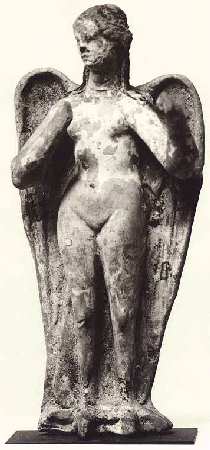
Lilith (or Lilitu) has over 100 names and variations in myths ranging from Ancient Sumeria to Jewish Mysticism to tribal Malayasia to myths about the Third Millenium. She is the first wife of Adam (before Eve) according to the Jewish myth. She is a Sumerian fertility/agricultural goddess, and she is the Greek goddess of the dark moon. She is the mother of all succubi. She is perhaps the most identifiable incarnation of historical feminism and men's fear of feminist idealogy (Judeo-Christian men used female icons to increase feminine demonification, essentially by lying and spreading rumours).
The Origin of Lilith:
Lilith has many origins. In one version of the bin-Sira version of the Bible, Lilith is the first wife of Adam (before Eve) and was created at the same time that god created Adam. In Greek myth, she is the goddess of the dark moon (Artemis is the goddess of the full moon, and Hecate is the goddess of the crescent moon). In Mesopotamian legends, Lilith is a fertility/earth goddess who protects people's children and helps to harvest food. In both Arabic and Jewish myths however, she is a succubus. A demon-woman who hunts men, seduces them and drains their life with a kiss. Jewish mothers believed Lilith would come to take their children away and eat them.
Its a bit like the German myth of Struwwelpeter. "Eat your food and stay clean or else Struwwelpeter will get you!"
There is a version of the Lilith myth in EVERY religion known to mankind. Many of them have different names, such as Marilith or Lilitu, but all of them connect with the common theme: A demon woman, often with wings, who kills men and sometimes children. A succubus.
Of course, there is also legends about incubi (singular: incubus), but these should not be confused with succubi (which is the plural of succubus). The incubi are fallen angels in Judeo-Christianity who fell to earth because they had sex with mortal women. Since then incubi have stalked the earth, seducing women in their dreams and impregnating them. The children of incubi grow up to become rapists.
The Lilith Library Archive hosts 250 images of Lilith and Lilith-related imagery.
List of Goddesses throughout the world.
If you know of more sites/info about Lilith, please email me.
Demonified Version of Lilith
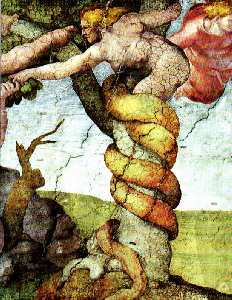
The Biblical Lilith:
When the Almighty created the first, solitary man, He said: It is not good for man
to be alone. And He fashioned for man a woman from the earth, like him (Adam), and
called her Lilith. Soon, they began to quarrel with each other. She said to him: I will not lie underneath, and he said: I will not lie underneath but above, for you are meant to lie underneath and I to lie above. She said to him: We are both equal, because we are both created from the earth. But they did not listen to each other.
When Lilith saw this, she pronounced God's avowed name and flew into the air. Adam stood in prayer before his Creator and said: Lord of the World! The woman you have given me has gone away from me. Immediately, the Almighty sent three angels after her, to bring her back.
The Almighty said to the Angels: If she decides to return, it is good, but if not, then she must take it upon herself to ensure that a hundred of her children die each day. They went to her and found her in the middle of the Red Sea. And they told her the word of God. But she refused to return. They said to her: We must drown you in the sea. She said: Leave me! I was created for no other purpose than to harm children, eight days for boys and twenty for girls.
When they heard what she said, they pressed her even more. She said: I swear by the name of the living God that I, when I see you or your image on an amulet, will have no power over that particular child. And she took it upon herself to ensure that, every day, a hundred of her children died. That is why we say that, every day, a hundred of her demons die. That is why we write the names Senoi, Sansenoi and Semangloph on an amulet for small children. Andwhen Lilith sees it, she remembers her promise and the child is saved.
Notes: This version of the myth is one of many, most of which have small translation flaws. Often the bible has been translated from Hebrew to Latin to German and then finally to English.
According to accompanying legends, Lilith was cursed and turned into a succubus.
God created Eve as an afterthought out of Adam's rib, in order to make her more
submissive. Lilith's descendants and Eve's descendants mingled together and bred, and
God decreed that Lilith is to kill all of her descendants, except for those protected by an amulet. This belief that Lilith will come to slay young children is still held in awe today in many cultures. As the mother of all other succubi, Lilith's daughters (succubi, or simply Liliths according to some tales) are also held to this and cannot harm any child protected by the amulet. This is Lilith's curse for being too dominating according to many tales, although it is also questioned as to whether the real reason is because she spoke God's avowed name and stole some of gods powers
Another legend says that Jehovah (god) and Lilith are actually god and goddess. Although usually the feminine half of god is known as Yahweh.
Suggestions also say that because Lilith never ate the forbidden fruit, like Adam and Eve did, Lilith is not tainted by original sin, and thus can never die. She is immortal like an angel. Angels can be destroyed however. As can demons. Begging the question of whether Lilith is invincible also.
Other Biblical and non-Biblical legends portray Lilith as being a terrible
mother-goddess. Her clergy is described as being temple prostitutes according to some
historians. This belief changed over time, with Lilith (or succubi in general) becoming the "divine whore" according to clergy men, described as being a tall beautiful, obsidian-skinned, bat-winged female with long red (some legends say black) hair and sharp blue eyes. This creature then seduces men and kills them. This is a perfect example of men describing ONLY the physical characteristics of women, and also their obvious fear of being powerless against a woman and controlled by them.
October 24th, Lilith's Day:Presumably the day that Lilith left Eden, or possibly a Sumerian Holy Day the celebrates the harvest (sort of like Thanksgiving). Whichever you prefer.
Lilith Aromatherapy:Contains: Essential oils of ylang ylang, black pepper, bitter orange and rose geranium.
To generate strength and confidence.
The Fear of Lilith:
An essay written by Lilith expert Charles Alexander Moffat. This is an early draft of Moffat's essay. Moffat studied Lilith for 4 years during university, alongside other myths and legends about similar female archetypes. He has other essays on various topics such as archetypes, androgyny, gender roles, gender roles in art, portraiture and art history. (Parts of Moffat's essay has been used "word for word" above.)
How to Summon a Succubus in 10 Easy Steps
A Victorian era spell for summoning a succubus.
A book by Robert Graves and Raphael Patai (New York: Doubleday, 1964). Graves and Patai have collected traditional Hebrew myths that amplify (and sometimes radically alter) stories found in the Book of Genesis. Chapter 10 of their book deals with Lilith. Each section of the chapter excerpted here recounts a "story" collected from non-biblical sources, frequently the Talmud. A much more extensive discussion of Lilith is found in the The Hebrew Goddess, a book also by Rapael Patai (Wayne State University Press, 3rd edition, 1978).
An essay by Jeffrey Smith.
A chronological listing of Lilith art from ancient sculptures to modern painting.
By Alejandro Arturo González Terriza, a comparative analysis of three ancient goddesses.
Right: Lilith Crying
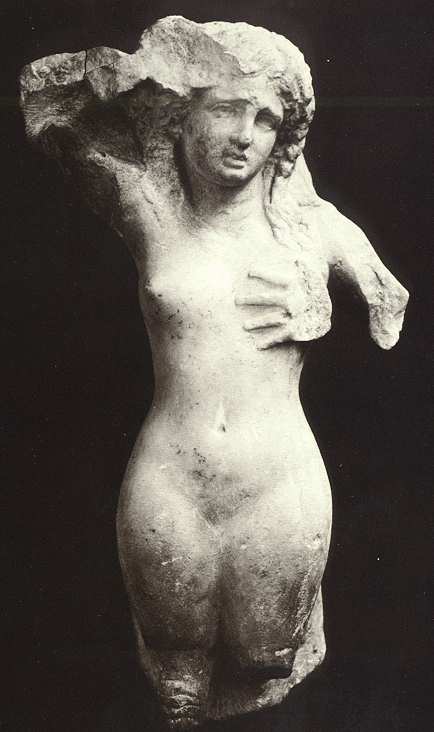
Magazines:
Lilith Magazine
The independent Jewish women's magazine. "Lilith", the United States's independent non-profit Jewish women's quarterly is named after the legendary predecessor of Eve, who insisted on equality with Adam. For 27 years, Lilith has been a unique voice, speaking out on the interrelationships of Jewish identity and feminism, and serving as a resource center and as a catalyst for action on behalf of Jewish women.
Hebrew Legends:
Hebrew Myths
Lilith/Gnostic creation Mythology by Robert Graves and Raphael Patai.
Lilit, Malkah ha-Shadim
An essay about Lilith by Jeffrey Smith.
Alt.Mythology
Collections of posts on Lilith from alt.mythology
Historical Sources:
Prologue to Gilgamesh
Kramer's Translation of a Gilgamesh Prologue
Apotropaic/Protection Magic
from Arslan Tash (Syria) 7th. c. BC.
List of Appearances in the Bible
In the Dead Sea Scrolls
In Jewish/Christian Pseudepigrapha
In Incantation Bowls
List of Appearances in the Talmud
Her Role in Jewish Mysticism:
Exerpt from Isaac b.Jacob ha-Kohen's "Treatise on the Left Emanation"
Kabbalistic demonology with a somewhat different take on Lilith
Origins in Kabbala
The Seductress
In the pantheon of demons
Bacharach: And her husband, Samael
Zohar: As God's consort
Zohar: Her ultimate defeat
Right:Lilith Relief
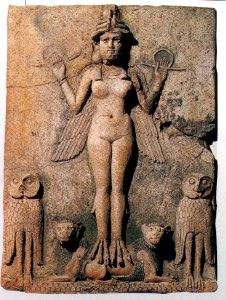
In Folklore and Traditional Literature:
Adam's first wife. From the The Bible/Alphabet
of ben-Sira/Ben Sira
Mirrors are windows into her world
In Modern Magic:
"Of certain
Jewish theories"
from Aleister Crowley's De Arte Magica: As Succubus
Michelle Bitton: "Dechiffrement d'une Amulette Juive du XXeme Siecle".
A translation (into French) and analysis of several apotropaic amulets, with photos.
A 18/19th c. apotropaic amulet. Text, translation,
and photo.
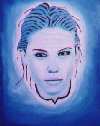
Blue Lilith
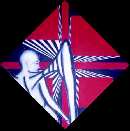
Lilith Above The City
|
In Modern Culture:
Lilith & Eve: Music, Poetry & Lyrics
Download free MP3s and browse lyrics and poetry about Lilith and Eve.
|

Lilith By The Red Sea
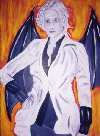
Lilith the Matriarch
|
|

|

